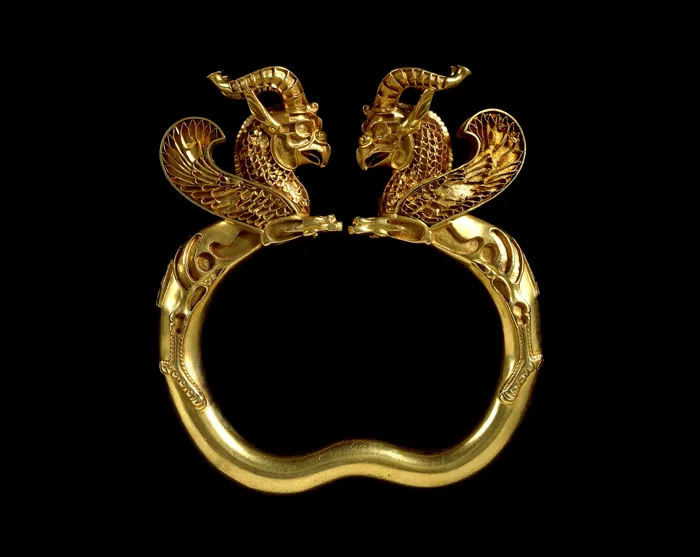The Age of Decadence: Luxury and Power: The Role of Opulence in the Achaemenid Empire, Athens, and Alexander the Great
Luxury has always been a symbol of wealth and status, but during the epic struggles between the Greeks and Persians in the 1st millennium BC, it took on an even greater significance. The contrast between Persian extravagance and Greek austerity played a key role in historical narratives, shaping perceptions of power and cultural identity. The British Museum’s exhibition, Luxury and Power: Persia to Greece (550-30 BC), sheds new light on how luxury influenced politics, society, and military strategy.

The Greek View of Persian Luxury
The ancient Greeks had a distinct perspective on luxury, often associating it with Persian decadence and moral weakness. This perception was cemented during the Battle of Plataia in 479 BC, where Greek forces defeated the invading Persian army and seized their opulent campaign quarters. The historian Herodotus vividly describes the astonishment of the Greek commander Pausanias when he beheld the Persian wealth—gold and silver so abundant that it was initially mistaken for bronze. To emphasize the stark contrast, he humorously ordered a humble Spartan meal to be served beside the Persian feast, using the comparison to highlight the folly of the Persian way of life.
Greek writers frequently depicted Persian luxury as excessive and corrupting, suggesting that it led to the empire’s decline. However, this characterization was largely shaped by Greek biases. Their accounts framed Persian indulgence as a weakness, while portraying Greek simplicity as a virtue that contributed to their military success.
Rethinking Persian Luxury: A Tool for Power and Unity
Rather than a sign of decay, Persian luxury was a strategic instrument for maintaining imperial control. The Achaemenid rulers, particularly Cyrus the Great, understood that opulence could serve as a unifying force across the vast empire. The Persian court’s grandeur was designed to impress and solidify loyalty, binding subjects to the king’s authority through a shared visual and material culture.

Scholars refer to this phenomenon as “court-style luxury.” The artifacts associated with the Persian court, including gilded drinking vessels and elaborate feasts, became markers of elite status throughout the empire. While the empire was built through military conquest, it was sustained through diplomacy, cultural integration, and the strategic use of luxury to win the loyalty of diverse populations.
The Theatrics of Elite Persian Dining
The Persian court’s dining culture was not just about indulgence—it was a carefully orchestrated performance that reinforced social hierarchy. Elite feasting required strict adherence to etiquette, and participation could determine one’s social standing. One striking example is the use of rhytons, ornately decorated drinking vessels shaped like animal heads. Unlike traditional cups, these vessels had curved bases, making them impossible to set down. Guests had to skillfully control the flow of wine by using their thumb to stopper the spout, all while balancing a drinking bowl in the other hand.

Luxury Beyond the Court: Persian Influence on Society
The reach of Persian luxury extended even to the empire’s frontier territories. Excavations at Deve Hüyük, a Persian garrison on the Turkish-Syrian border, reveal that even common soldiers aspired to the courtly lifestyle. British archaeologist T. E. Lawrence, known as Lawrence of Arabia, uncovered artifacts from military tombs that mirrored those found in the royal court. While these objects were crafted from less luxurious materials, they followed the same stylistic conventions, demonstrating how deeply Persian ideals of opulence permeated all levels of society.
Alexander the Great: Embracing and Transforming Persian Luxury
Alexander the Great’s conquest of the Persian Empire in the 4th century BC marked a fusion of Greek and Persian traditions. Unlike his Greek predecessors, Alexander recognized the power of Persian luxury and adopted many of its customs. He incorporated Persian court dress, rituals, and administrative practices into his rule, using them to consolidate his control over the vast territories he had conquered. His approach blurred the rigid distinctions between Greek and Persian identities, illustrating that luxury was not merely a symbol of excess, but a potent political tool.
Conclusion: The Dual Nature of Luxury
The debate over luxury—whether it corrupts or empowers—has persisted since antiquity. While Greek historians dismissed Persian opulence as decadent, the Achaemenids wielded luxury as an instrument of governance and unity. The British Museum’s exhibition invites us to reconsider these ancient perspectives and recognize that, far from being a weakness, luxury was central to the strength and endurance of the Persian Empire. Even today, luxury remains a paradox—both admired and distrusted, much like it was over two millennia ago.


